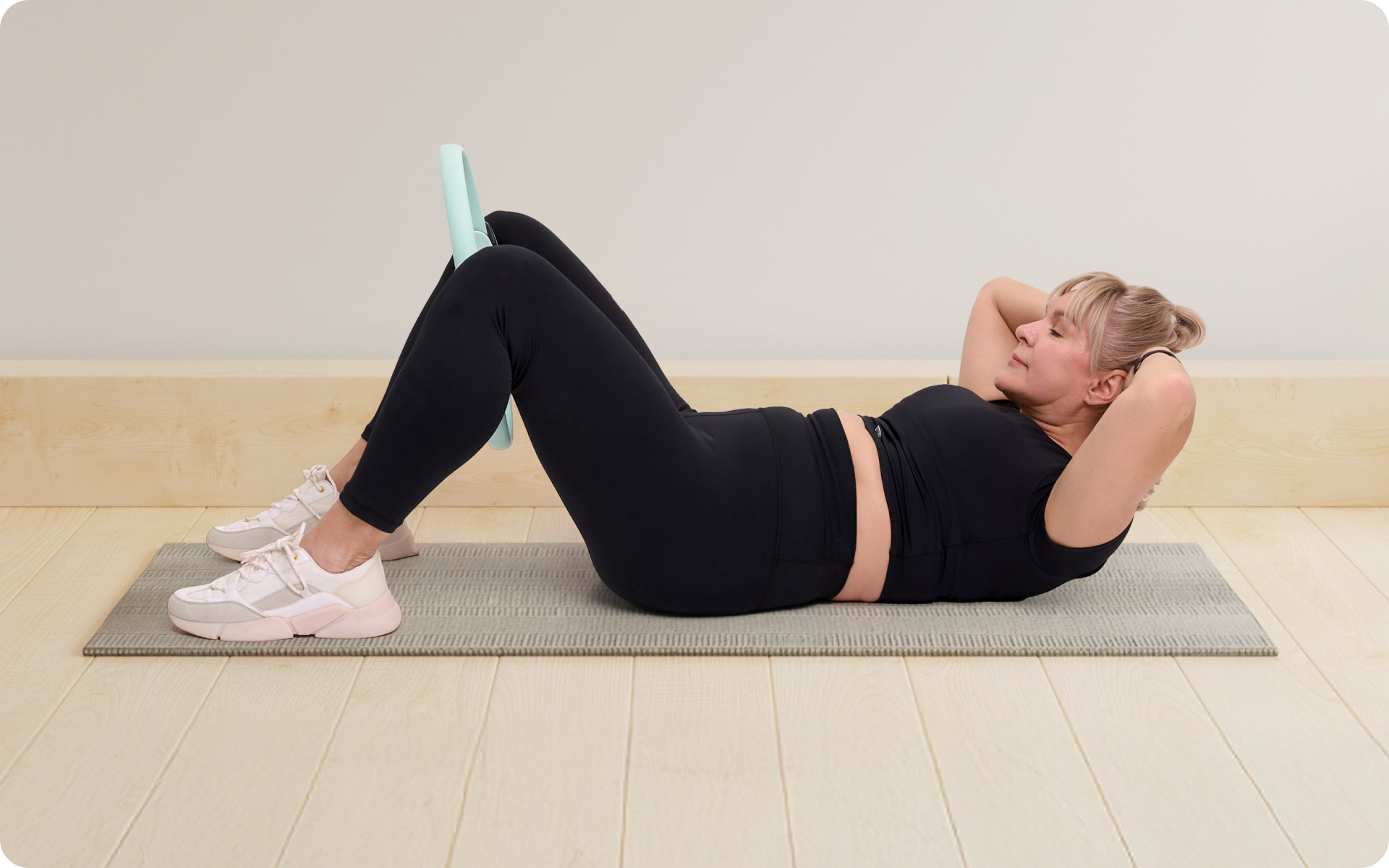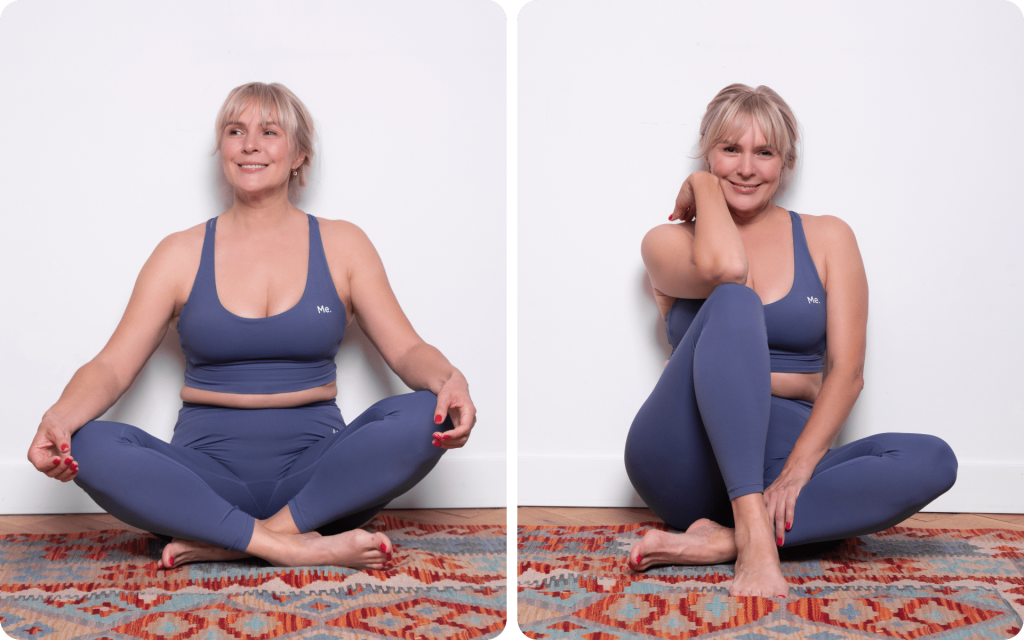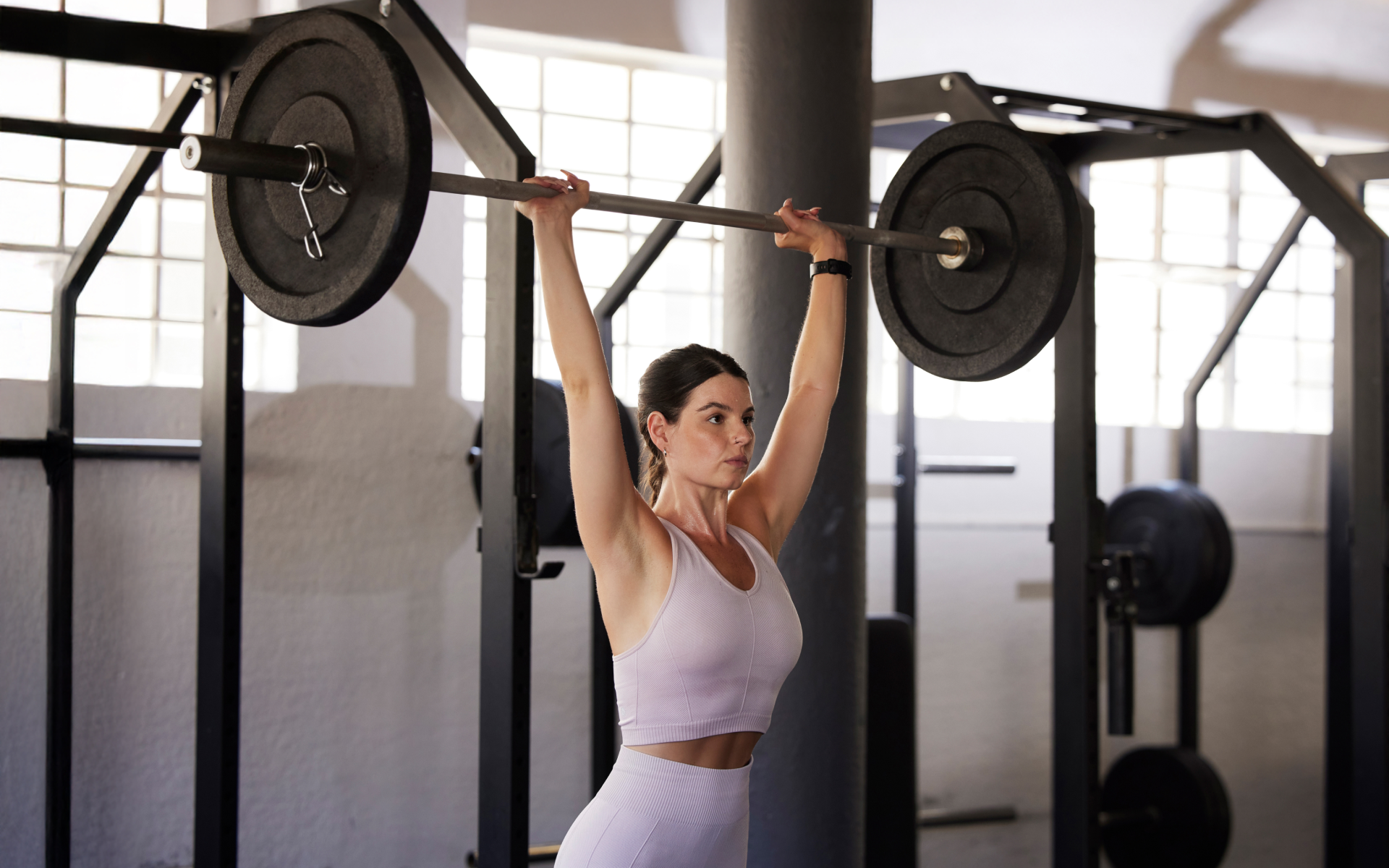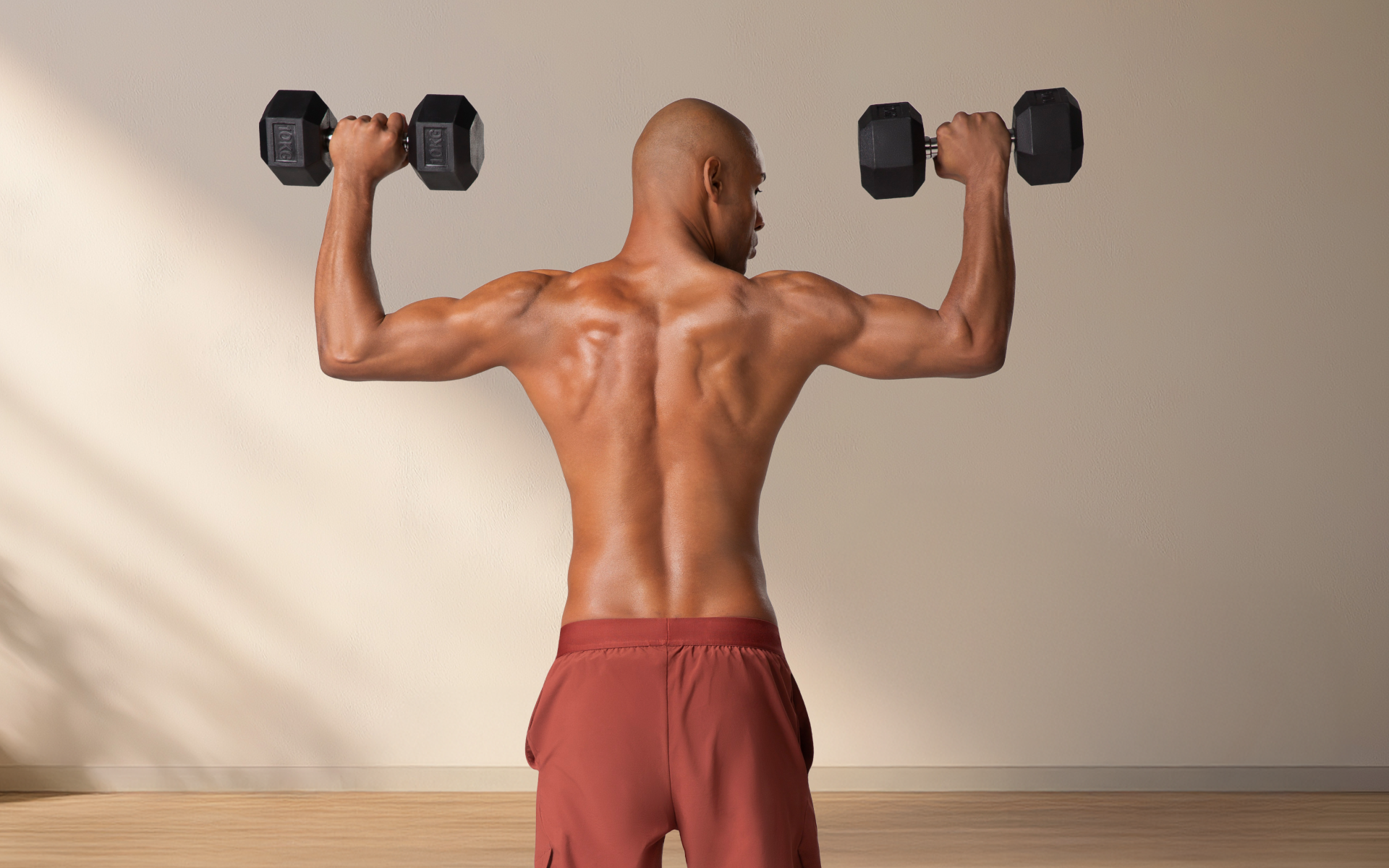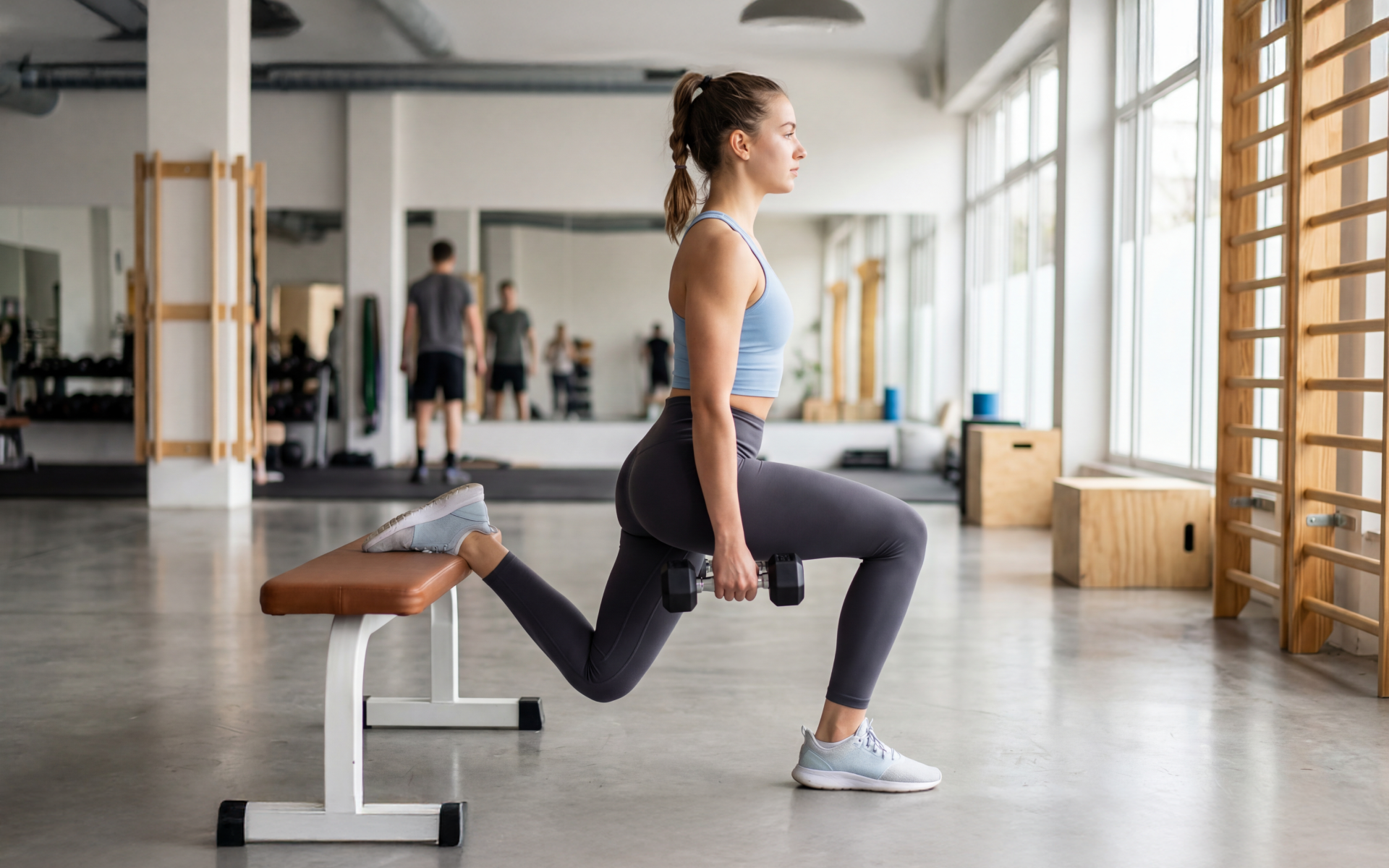Hitting the gym feels different at 50 than it does at 20 or 30 – that’s no secret. And while it may sometimes seem like building muscle gets harder with every birthday, is it really an impossible task after 50? The short answer is no.
Yes, your body changes as you age, but growth is still on the table. The process may look different compared to your younger years.
Muscle loss, known as sarcopenia, naturally starts to creep in as we age (1). This can make gaining strength a bit more challenging. Your muscles may not respond as quickly or as strongly to exercise as they once did.
However, with the right strategies and a clear understanding of how your body works, you can still see gains.
This article dives into the science of building muscle after 50, breaking down the unique challenges and offering insight into what is possible. Let’s explore this together.
Is It Possible to Build Muscle After 50?
Yes, it’s possible to build muscle after 50, but it’s not as straightforward as it was in your 20s or 30s. Aging brings unique challenges to the table, but with the right approach, you can still make significant gains.
Let’s bust some misconceptions about building muscle in your 50s.
- Muscle Loss with Age is Real
Around the age of 30, a slow loss of muscle mass and strength begins (1). By the time you’re 50, this can pick up pace, leading to reduced muscle size, strength, and endurance. But here’s the good news – resistance training and proper nutrition can counteract muscle loss and help rebuild what’s been lost (2, 3).
- Your Body is Less Responsive to Exercise
One big challenge is anabolic resistance. This means your body doesn’t respond to strength training and protein as efficiently as it did when you were younger. Anabolic resistance can make it more difficult to kickstart muscle growth (hypertrophy) (4, 5).
While this sounds discouraging, research has shown that higher protein intake and consistent resistance exercise can overcome this barrier.
- Hormonal Changes Play a Role
Your body’s hormones, particularly testosterone and growth hormone, naturally decline with age (6). These hormones are key players in muscle building (7). Lower levels mean your body repairs and grows muscle at a slower rate.
While you won’t see the same results as someone in their 20s, studies have suggested that muscle growth is still quite possible, just at a slower pace.
- Satellite Cells and Muscle Repair
When you train, your muscles rely on satellite cells (muscle stem cells) to rebuild and grow stronger (8). Age reduces both the number and activity of these cells (8). This may sound concerning, but don’t write them off yet. Research has highlighted that while older satellite cells may be less active, consistent training can still recruit them to repair and grow muscle tissue (9). Our previous post goes into great detail about the strength training for women over 50.
When it comes to weight loss, progress is made by inches, not miles, so it’s much harder to track and a lot easier to give up. The BetterMe: Health Coaching app is your personal trainer, nutritionist, and support system all in one. Start using our app to stay on track and hold yourself accountable!
- Neuromuscular Changes
Over time, you may lose some nerve connections that control muscle contractions. This contributes to reduced strength and muscle growth potential (10). Even so, strength training can help maintain these connections and improve muscular function.
- Lifestyle Factors
Many older adults face limitations such as less physical activity, poor nutrition, or chronic conditions that make muscle growth more challenging (11). Addressing these factors is the key to maximizing muscle-building potential.
- The Role of Nutrition
Nutrition becomes more important as you age (12). People over 50 often require more protein to stimulate muscle growth because of anabolic resistance. Studies have suggested consuming 1.2 to 1.6 grams of protein per kilogram of body weight daily, spread across meals (13).
Adding leucine, an amino acid that is found in foods such as eggs and fish, can boost muscle repair and growth (14). Supplements such as creatine may also help by supporting energy production during workouts (15).
- Your Recovery Needs Change
Recovery takes longer after 50. Muscles repair and adapt during rest, but aging slows down this process (16). Overtraining can lead to injuries or burnout. You’ll need to balance pushing yourself with allowing enough recovery time to see results safely.
- Tailored Resistance Training Works
Not all exercise is created equal. Resistance training, which includes lifting weights or using resistance bands, specifically targets muscle growth.
You don’t necessarily need to lift heavy weights – even low-load resistance exercises taken to fatigue can be effective (17). The key is consistency, proper form, and gradually increasing intensity.
- It’s Not Just About Muscles
Building muscle in your 50s isn’t just about looking good. Strong muscles support your joints, improve balance, and reduce the risk of injuries or falls. They also contribute to metabolic health, which helps prevent issues such as diabetes or weight gain (18).
Read more: How Women Can Gain Muscle After 50: Be Fit Fab After Menopause
How Fast Can a 50-Year-Old Gain Muscle?
Assuming optimal conditions (this means following a structured strength training program, maintaining a protein-rich diet, allowing adequate recovery, and being in good overall health), a 50-year-old can expect to gain muscle within the first few months of training (19).
For adults of any age, beginners who are new to strength training often make the fastest progress. This phenomenon is called newbie gains (20).
For someone over 50 who is starting from scratch, it’s reasonable to expect a muscle gain of approximately 1-2 pounds per month during the first 6-12 months of consistent resistance training (21). This translates to roughly 0.25-0.5 pounds of muscle per week. This rate will slow down as your body adapts to the training. Discover the science behind powerlifting routines for over 50 in one of our earlier articles.
For those who have previous training experience, the rate could be slower, as your muscles are already accustomed to regular exercise and the gains become more incremental.
For a 50-year-old beginner, a realistic timeline may look like this:
- 1 month in: Strength improvements will likely be noticeable first. You may feel stronger and more capable of lifting or moving more weight, even if visible changes are minor. This is typically due to neurological changes in muscles.
- 3-6 months in: Visible muscle tone and slightly increased muscle mass may start to show. You’ll also notice better endurance during workouts.
- 12 months in: Consistent training and good nutrition could lead to 10-20 pounds of muscle gain over the year, depending on your starting point and dedication.
Should You Do Weights or Cardio After 50?
All adults should do both weights and cardio. Each brings unique benefits that are essential for overall health, particularly as you age.
Weights (resistance training) and cardio (aerobic exercise) work in completely different ways. Resistance training helps build and maintain muscle, while cardio strengthens your heart and lungs while improving endurance.
After 50, combining these two becomes essential for combating muscle loss (sarcopenia) and preserving cardiovascular health.
- The Importance of Resistance Training
Resistance training is very important after 50. Muscle mass naturally declines with age, but lifting weights will help keep your muscles strong. Strong muscles are more than aesthetic – they support your joints, improve posture, and enhance your ability to perform daily tasks (18).
Lifting weights also boosts your metabolism by maintaining lean muscle, which burns calories even at rest (22). It also strengthens your bones, which reduces the risk of osteoporosis – a condition where the bones become weaker and more prone to fractures (18).
Even if you’re new to weight training, starting with simple exercises using dumbbells or resistance bands can make a difference. Full-body exercises such as squats, lunges, and push-ups are particularly effective. Dive deeper into the senior strength exercises with our dedicated article.
- The Role of Cardio
Cardio benefits your heart and circulatory system. Exercises such as walking, jogging, cycling, or swimming can lower your blood pressure, improve cholesterol levels, and reduce the risk of heart disease (23).
Aerobic activity also helps manage weight and enhances mood by releasing endorphins (your body’s feel-good chemicals) (23, 24).
After 50, cardio becomes particularly important for maintaining stamina (25). Activities such as brisk walking or low-impact workouts on an elliptical machine are gentler on your joints while still building endurance.
- How to Strike the Right Balance
Balancing weights and cardio is key. Experts recommend at least 150 minutes of moderate cardio or 75 minutes of vigorous cardio per week, combined with two sessions of resistance training (26). For example, you may dedicate three days to walking or swimming and two days to weightlifting.
- Tailoring Your Routine
Your fitness goals can guide where to place more emphasis:
- Build Muscle: Focus more on weights. Include compound movements (exercises that target multiple muscle groups) and gradually lift heavier as you gain strength.
- Improve Endurance: Lean toward more cardio. Activities such as cycling or swimming help build stamina while being easy on aging joints.
- Balance Both: If you’re aiming for an overall fit body and better health, keep a balanced routine. Pair shorter, intense cardio (like intervals) with strength sessions.
What Is the Best Workout Schedule for Building Muscle After 50?
An upper-lower split is an excellent way to structure your workouts after 50. This routine ensures you work all the major muscle groups while giving specific areas time to rest and recover. Here’s a balanced, safe, and effective four-day split you can follow.
Day 1: Upper Body (Push and Pull Focus)
Warm-Up (5-10 minutes of light cardio, followed by dynamic stretches targeting the upper-body muscles)
- Bench Press or Push-Ups – 3 sets of 10-12 reps
- Incline Dumbbell Press – 3 sets of 10-12 reps
- Bent-Over Rows (using dumbbells or a barbell) – 3 sets of 8-10 reps
- Overhead Shoulder Press (seated or standing) – 3 sets of 10-12 reps
- Bicep Curls (using dumbbells or resistance bands) – 3 sets of 10-12 reps
- Tricep Dips or Tricep Extensions – 3 sets of 10-12 reps
Day 2: Lower Body
Warm-Up (5-10 minutes of light cardio, followed by dynamic stretches targeting the lower-body muscles)
- Squats (bodyweight, goblets, or barbell) – 3 sets of 10-12 reps
- Romanian Deadlifts (light dumbbells or barbell) – 3 sets of 10-12 reps
- Step-Ups (using a sturdy bench or platform) – 3 sets of 10 reps per leg
- Leg Curls (using a machine or lying bodyweight version) – 3 sets of 12 reps
- Calf Raises (standing or seated) – 3 sets of 15 reps
Day 3: Rest or Active Recovery
Take a day off from intense exercise and focus on light activities such as walking, yoga, or gentle stretching. This day allows your body to recuperate and prepare for the next workouts.
BetterMe will shake off your mental funk, rid you of your energy-zapping habits, and help you sculpt the body of your dreams. Intrigued? Hurry up and change your life for the better!
Day 4: Upper Body
Repeat Day 1
Day 5: Lower Body
Repeat Day 2
Day 6-7: Rest or Active Recovery
Give your body time to rest with one or two days of light activity such as a long walk, swimming, or foam rolling. Recovery is essential for muscle repair and growth.
How Many Times a Week Should a 50-Year-Old Lift Weights?
The sweet spot for most 50-year-olds is lifting weights two to four times per week. This frequency provides the perfect balance between challenging your muscles and allowing them the recovery time they need to grow (27). However, the “right” number can vary depending on your experience level, fitness goals, and ability to recover.
When you lift weights, you create small tears in muscle fibers. Your body repairs these tears during rest, which makes the muscle stronger and larger (28). However, this repair process takes longer as you age, which is why recovery is crucial.
Lifting too often without adequate rest can lead to overtraining. Symptoms include soreness that lingers, fatigue, or a plateau in results. On the flip side, not training often enough can limit progress, as muscles don’t receive the consistent stimulus needed for growth.
For Beginners
If you’re new to strength training, start with two to three sessions per week. This will give your muscles time to adapt to the new demands without overwhelming your recovery system.
- Example schedule:
Monday and Thursday or Tuesday and Friday
Focus on full-body workouts, targeting all major muscle groups with a mix of push, pull, and lower-body exercises.
For Intermediate Lifters
If you’ve been lifting consistently for a while, three to four sessions a week is a great range. Splitting your workouts (e.g. upper-lower split) allows individual muscle groups more recovery time while letting you train more frequently.
- Example schedule:
Monday, Wednesday, Friday, and Saturday
Alternate between upper and lower body or different focus areas.
For Advanced Lifters
Experienced lifters who know their recovery capacity can lift four or more times weekly, but only if recovery protocols (nutrition, sleep, and proper periodization) are in place. At this level, workouts are usually divided into smaller, more focused sessions.
- Example schedule:
Monday, Tuesday, Thursday, and Friday
Split across muscle groups such as chest/back, legs, and shoulders/arms.
Pay attention to how your body feels. If you feel sluggish, struggle to lift the same weight, or experience persistent aches, it may be a sign that you should scale back. On the other hand, if you feel energized and your strength is improving, you may be recovering well and able to maintain or you may consider increasing your frequency if you have been at the same volume/intensity for a longer period of time.
What Is the Recovery Time for Weight Training over 50?
For most individuals over 50, the ideal recovery period between training sessions for the same muscle group is 48 to 72 hours (29). If you’re performing a full-body workout, you should aim for two to three rest days before you repeat it.
For split routines, where different muscle groups are trained on different days, recovery may vary depending on how much strain each workout places on specific muscles.
Recovery is not one-size-fits-all, and a range of factors can affect how quickly your body bounces back:
- Workout Intensity and Volume
- Heavy lifting with fewer reps often requires longer recovery than lighter weights with higher reps. High-volume sessions (e.g. many sets and exercises) also extend recovery time.
- Age and Fitness Level
- A 50-year-old who is in peak physical shape may recover quicker than someone who is less conditioned, but both should prioritize rest as a key part of their routine.
- Nutrition
- Consuming enough protein is essential for muscle repair. Aim for 20-30 grams of protein within an hour of your workout and ensure you meet your daily protein goals. Carbohydrates also play a role by replenishing energy stores.
- Hydration
- Dehydration can slow down recovery. Drink plenty of water before, during, and after your sessions to help your muscles function and repair.
- Sleep
- Sleep is when most recovery happens. Poor sleep can delay healing and reduce workout performance. Aim for 7-9 hours each night.
- Active Recovery
- Light exercise on rest days, such as walking, yoga, or stretching, can boost blood flow and speed up muscle recovery. Foam rolling or a gentle massage can also help.
Recovered muscles should feel strong and relatively soreness-free. If you can lift with proper form and adequate strength, and you feel mentally prepared for your next session, it’s a good sign you’re ready to train again. However, if soreness persists or your performance drops, tweak your schedule to include more rest.
Read more: The Ultimate Arms and Abs Workout Guide for Beginners
At What Age Can You No Longer Build Muscle?
The simple answer is this: there isn’t a specific age at which you can no longer build muscle. While it’s true that muscle growth becomes more challenging as you age, science has shown that it’s possible at virtually any age with the right approach.
The primary driver of muscle growth, at any age, is resistance training. Exercises such as lifting weights, using resistance bands, or performing bodyweight movements can all create the necessary “stimulus” for muscles to grow.
A 2014 study found that older adults who engaged in resistance training saw significant increases in both muscle size and strength (30).
Other studies have confirmed similar results, with participants of advanced age responding positively to strength-training programs compared to younger adults.
After the age of 30, adults can lose 3-5% of their muscle mass per decade if they are sedentary. However, even in people experiencing muscle loss, resistance training has been shown to slow or reverse this process.
No, 50 isn’t too late to start bodybuilding. Research has shown that people over 50 can build muscle, increase their strength, and improve their bone density with strength training. Start with a consistent routine, focus on proper form, and allow adequate recovery time. Yes, you can get a six-pack at 50, but it requires dedication. Building visible abs combines strengthening core muscles with reducing body fat through a healthy diet and regular exercise. As metabolism slows with age, it may take longer, but it’s achievable with consistency. To build muscle after 50, you should aim for 1.2 to 2.0 grams of protein per kilogram of body weight daily. Spread intake across meals for better muscle protein synthesis. For example, a 70 kg (154 lb) person should consume 84 to 140 grams of protein daily. The number of push-ups varies based on fitness level. On average, a 55-year-old man can aim for 10-15 push-ups as a baseline. With consistent training, this number can improve over time. Focus on maintaining proper form rather than a high number of reps.Frequently Asked Questions
Is 50 too late to start bodybuilding?
Can I get a six-pack at 50 years old?
How much protein is required to build muscle after 50?
How many push-ups should a 55-year-old man do?
” mp4=”https://cdn.betterme.world/articles/wp-content/uploads/2025/05/Pilatesseniorwomen2.mp4″]
The Bottom Line
While aging changes the game, it doesn’t take you out of it. Muscle building after 50 is possible, but it requires adjustments. Resistance training, a protein-rich diet, and proper recovery are essential pieces of the puzzle. Results may take longer, but they’re worth the effort.
DISCLAIMER:
This article is intended for general informational purposes only and does not serve to address individual circumstances. It is not a substitute for professional advice or help and should not be relied on for making any kind of decision-making. Any action taken as a direct or indirect result of the information in this article is entirely at your own risk and is your sole responsibility.
BetterMe, its content staff, and its medical advisors accept no responsibility for inaccuracies, errors, misstatements, inconsistencies, or omissions and specifically disclaim any liability, loss or risk, personal, professional or otherwise, which may be incurred as a consequence, directly or indirectly, of the use and/or application of any content.
You should always seek the advice of your physician or other qualified health provider with any questions you may have regarding a medical condition or your specific situation. Never disregard professional medical advice or delay seeking it because of BetterMe content. If you suspect or think you may have a medical emergency, call your doctor.
SOURCES:
- Sarcopenia (2023, ncbi.nlm.nih.gov)
- Resistance Exercise to Prevent and Manage Sarcopenia and Dynapenia (2017, pmc.ncbi.nlm.nih.gov)
- Nutritional Recommendations for the Management of Sarcopenia (2015, pmc.ncbi.nlm.nih.gov)
- Defining anabolic resistance: implications for delivery of clinical care nutrition (2018, journals.lww.com)
- Anabolic Resistance of Muscle Protein Turnover Comes in Various Shapes and Sizes (2021, frontiersin.org)
- Links Between Testosterone, Oestrogen, and the Growth Hormone/Insulin-Like Growth Factor Axis and Resistance Exercise Muscle Adaptations (2021, frontiersin.org)
- Aging changes in hormone production (2024, medlineplus.gov)
- The Role of Satellite Cells in Skeletal Muscle Regeneration—The Effect of Exercise and Age (2021, mdpi.com)
- Fusion and beyond: Satellite cell contributions to loading-induced skeletal muscle adaptation (2021, faseb.onlinelibrary.wiley.com)
- The aging neuromuscular system and motor performance (2016, journals.physiology.org)
- Factors that influence older adults’ participation in physical activity: a systematic review of qualitative studies (2023, academic.oup.com)
- Nutrition for Older Adults (2024, medlineplus.gov)
- Protein Needs for Adults 50+ (2024, longevity.stanford.edu)
- Leucine supplementation chronically improves muscle protein synthesis in older adults consuming the RDA for protein (2013, pmc.ncbi.nlm.nih.gov)
- Effectiveness of Creatine Supplementation on Aging Muscle and Bone: Focus on Falls Prevention and Inflammation (2019, mdpi.com)
- Age-Associated Differences in Recovery from Exercise-Induced Muscle Damage (2024, mdpi.com)
- Physiological Responses and Adaptations to Lower Load Resistance Training: Implications for Health and Performance (2023, link.springer.com)
- Live strong and prosper: the importance of skeletal muscle strength for healthy ageing (2016, link.springer.com)
- Adaptations to Endurance and Strength Training (2018, pmc.ncbi.nlm.nih.gov)
- Muscle hypertrophy, hormonal adaptations and strength development during strength training in strength-trained and untrained men (2003, link.springer.com)
- Influence of Resistance Exercise on Lean Body Mass in Aging Adults (2011, journals.lww.com)
- Increasing muscle mass to improve metabolism (2016, pmc.ncbi.nlm.nih.gov)
- Cardiovascular Effects and Benefits of Exercise (2018, frontiersin.org)
- The Effects of Acute Exercise on Mood, Cognition, Neurophysiology, and Neurochemical Pathways: A Review (2017, pmc.ncbi.nlm.nih.gov)
- Aging, aerobic exercise, and cardiovascular health: Barriers, alternative strategies and future directions (2023, pmc.ncbi.nlm.nih.gov)
- Adult Activity: An Overview (2023, cdc.gov)
- STRENGTH TRAINING FOR OLDER ADULTS (2002, cdc.gov)
- Muscle hypertrophy and muscle strength: dependent or independent variables? A provocative review (2020, pmc.ncbi.nlm.nih.gov)
- The Importance of Recovery in Resistance Training Microcycle Construction (2024, pmc.ncbi.nlm.nih.gov)
- Muscle tissue changes with aging (2004, journals.lww.com)
